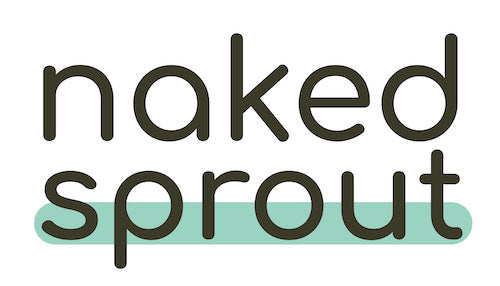Six wild and weird animal toilets for World Animal Day

October the 4th is World Animal Day, an annual event supported by UK charity Naturewatch Foundation where people around the world take part in events and campaigns, big and small, to advocate for animals.
At Naked Sprout we design our products with the environment in mind. And since our best known products are our unbleached toilet rolls, we thought we’d take the opportunity to celebrate World Animal Day with a look at what the rest of the animal kingdom do with their droppings.
Do bears poo in the woods? It’s the perfect day to find out.
 x
xCommunal toilets - animals who share their space
Many animals use their droppings as a way of marking off private territory, but others are more community-minded. In fact, some species actually use communal toilets, where everyone in the group goes to the bathroom in the same spot. It's like an animal public loo, except without the hand dryers.
1. Rhinos - midden messengers
Rhinos use communal toilets known as "middens," where multiple rhinos leave their droppings in the same area. These piles, which can reach sizes of 3 metres across, are an important part of rhino social life. Rhinos sniff the middens to gather information about other rhinos, like who's been in the area and whether there are potential mates nearby. The biggest rhinos in a herd will even kick their droppings over the whole pile to make sure everyone knows they’re the head honcho.
2. Meerkats - in-group poopers
Meerkats are all about teamwork. They have designated bathroom spots called “latrines” that they share with the rest of their group, and sometimes even a neighbouring group as well. This allows them to keep their territory organised and clean, and it also serves as a boundary marker to tell any roaming meerkats to stay away.
3. Dung beetles - nature’s little helpers
Dung beetles don’t poo communally but they are an important guest-star of any dung heaps made by other animals. In the UK, we have around 60 species of dung beetle and they do fantastic work for the environment by collecting and digesting the piles of manure left by farm animals, and returning their nutrients to the soil.
This means less pest flies, better crop yields, and healthier pastures and animals to boot.

Sneaky poopers, animals that go it alone
Not all animals are fans of the communal toilet concept. Some prefer to keep their bathroom business a little more discrete.
1. Cats - hide and cover
If you’ve ever been lucky enough to share your home with a cat, you’re probably familiar with the distinctive scratching sound of them covering up their droppings after using the litter tray. Domestic cats nearly always hide their poo; it’s a behaviour they share with some of their wild cousins, but not all of them.
Large wild cats like lions and tigers leave their droppings unburied, so it’s believed that burying behaviour in small cats is a survival tactic, helping the less intimidating members of the feline family stay off the radar of larger predators.
2. Rabbits: the eat-poo cycle
Rabbits have a unique and efficient toilet habit—they actually eat their droppings! It sounds weird to us but it's a completely normal part of digestion for our fluffy friends. Rabbits produce two types of droppings: hard, dry ones, which they leave, and softer ones called caecotrophs, which they eat.
The second “round” of digestion allows rabbits to get all of the nutrients out of their diet of grass and plant matter, keeping them healthy and hoppy!
3. Bears: stinky signallers
We couldn’t finish a discussion of animal toilet habits without a special look at bears. Those of us in the UK don’t really have to deal with bears doing their business, in the woods or otherwise. But readers in parts of the US, Canada, and parts of Asia are likely to be more familiar with the signs to watch out for, and chief among these signs is their poo!
Bears are naturally elusive and cautious when it comes to humans, and they don’t bury their droppings like cats do. So people who are camping and hiking in places where bears live should keep an eye out for their distinctive dark brown scat.
If you come across fresh signs that bears have been pooing in your neck of the woods, it’s best to move on and leave them to it!

In Conclusion: Let’s Keep It Wild and Clean
From rhinos using communal toilets to cats burying their business in stealth mode, all creatures great and small answer nature’s call, and they do it in a heap of wild and wonderful ways. As humans we need to be mindful of where and how we do our business—especially when it comes to what we flush and throw away.
By choosing more environmentally friendly raw materials like recycled cardboard or FSC-certified bamboo, we can do our part to keep things clean - both in our homes and in the wild. After all, animals deserve to do their business in a clean environment, just like we do!
Want to take some sustainable, unbleached toilet rolls on your next trip to the woods (or the bathroom)?




